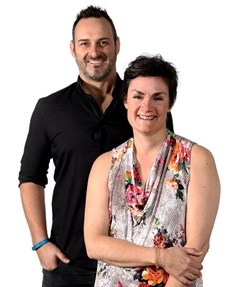






Hartnady explains it actually started off as a self-promo opportunity for Grey Design, as they’re trying to push the design division of Grey, and in doing so wanted to also do something that helps communities. Fortuitously then, not long after this he was sitting with his brother, Connor an emergency care practitioner and lecturer at the department of medical care at the University of Johannesburg, talking about the various issues he faces in responding to emergencies. The biggest one? Driving around in frustration, not finding the houses they’re looking for. So, Hartnady thought to himself, “Almost everyone has a satellite dish in the townships, why don’t we use that as the perfect medium to showcase the house number?” And with that, Satellifes was born.
If you watch the ad you’ll notice the gritty production quality, which makes it that much more ‘real’:
It’s simple yet life-saving, but much of the success of the campaign lies on the activations side, where Loxyion Conexyion enhanced buy-in, Luckin knew its founder and director Daniel Kahn from their shared days at Ogilvy and kept in touch when he moved on to SA Breweries for quite a few years before he took a year off and spotted an opportunity to build connections in the townships in Soweto, KZN, greater Gauteng, the North Province, Eastern Cape and the Western Cape. He simply went into communities where he had friends and explored them, getting to know other people, networking and spending time with them. Only after that year of building relationships did Kahn launch township marketing agency, Loxyion Conexyion.
In the meantime, Grey had come up with the Satellife idea, but struggled to build trust with the local community. Grey even went as far as to approach people from their churches who live in Alexandra, even roping in their CEO’s wife who does a lot of work in Diepsloot in an attempt to get in however, kept hitting a brick wall in this regard.
In another serendipitous moment, Kahn got in touch with Luckin around then and the rest is history. Because of Loxyon Conexyion’s deep friendships and relationships in the industry, they were essentially part of the community and perfectly placed to speak to the homeowners, get the interviews, and apply decals to 10 houses.
Asked how the pilot has gone, Hartnady says it’s surprising, especially in light of the initial hesitance at getting involved, that even when applying the decals many people would came to express interest, some being so bold as to ask: ‘Hey, when are you coming to do my house?’ With this snowballing interest they’re now working on a phase two approach to make it easily accessible for everyone to have one, with a ‘stencil-type’ idea in the works that will simplify roll out throughout the country.
Luckin says, “Now we know it works and that the satellite dishes are a good vehicle for this and that people do want the idea.” She also mentions reaction on social media being very positive, with a tavern owners’ publication expressing interest in publicising it. They just need to find a very mass-producible way to get it into people’s hands. She adds, “The decals need to be democratised so people can apply themselves and even do their own designs.” This ties into the aspect of our need to beautify our homes with self-expression and making your home unique. “Especially in the townships, there’s a lot of appetite for fancy burglar bars and sculpting the trees in the garden,” says Luckin.
Hartnady says this ties in with the current move towards purposeful marketing: it’s a mindset change more than about selling a product.
On design changing the world then, Hartnady has noted a huge trend over the last few years in this regard, with Design Indaba showcasing that really well – “design is about changing things and changing lives more than just beautifying them.” He says there’s a nice balance now where it’s not just about fame and being pretty and bold, it’s also about things working really well, and that’s where design is excelling these days, finding that great balance. Both attended Design Indaba and – excitingly for me, as I found the What3Words presentation one of the most interesting of the three days of creative inspiration – hinted at a potential collaboration down the line, with design literally changing the world. It’s an opportunity to implement Satellifes through the What3words model that maps the whole world into three word grids.
Luckin ends with a reminder that we are increasingly creating environments digitally where we’re no longer living an entirely natural world. This means there’s an increasing role for design to play in making life easier for people as we use digital or mobile as a navigation tool for our lives. Think of trains, railway lines, layouts of buildings and shopping centres – user experience is rocketing here as we realise we’re living in male- and female-made environments that have to be curated or thought through with the experience designed.
It’s time to creatively rethink the whole wide world, one minor societal problem at a time. You can also click through to the official press release in Grey’s press office or follow their Twitter feed and the #Satellife hashtag for the latest updates!
